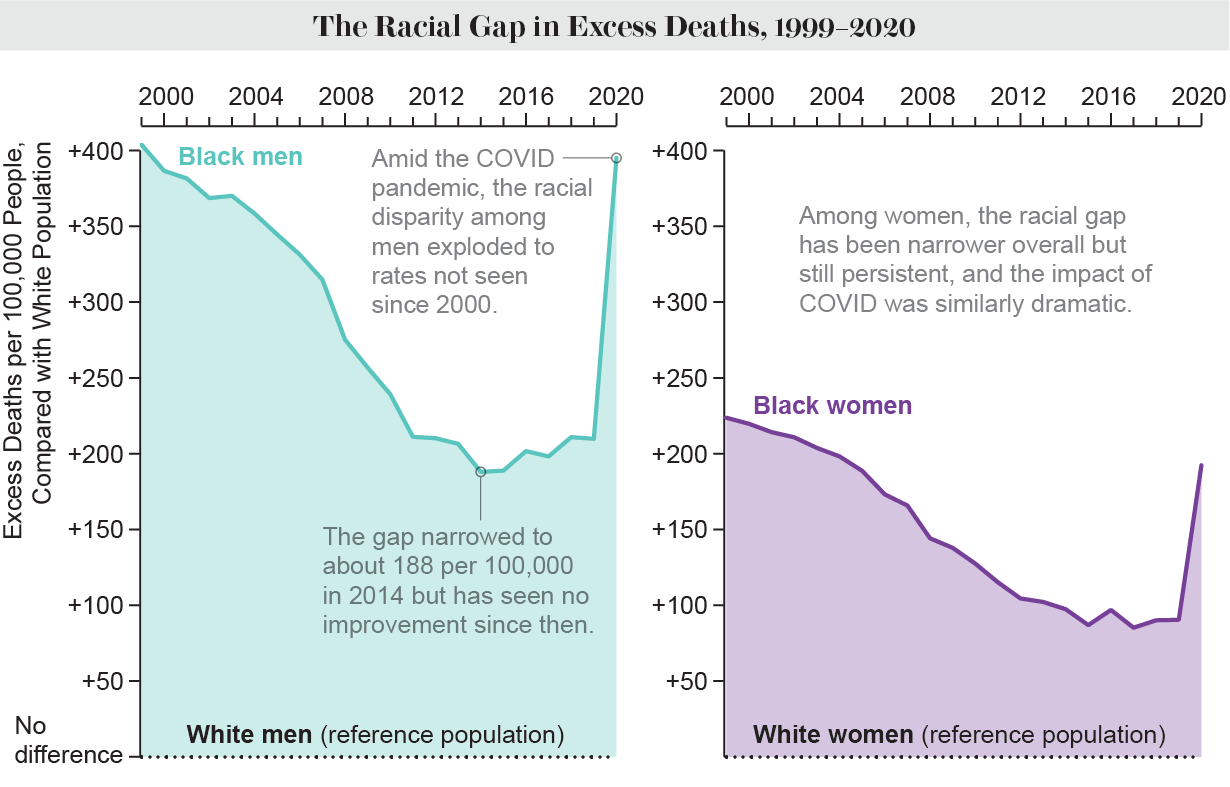Mortality rates between Black and white Americans provide a critical lens through which we can examine health disparities in the U.S. Despite significant improvements in life expectancy over the past decades, the gap in infant mortality rates continues to raise alarming concerns. A recent study spanning 70 years reveals that while adult mortality rates have seen a positive shift, Black infants now experience a mortality rate nearly double that of their white counterparts. This stark racial health inequality underscores the pressing need for targeted public health policies aimed at addressing these disparities. By understanding the trends in both infant and adult mortality, we can better advocate for equitable healthcare initiatives that aim to close these gaps.
The examination of death rates among African American and Caucasian populations highlights significant inequities in health outcomes over time. While overall lifespans have increased for both groups, the troubling rise in infant deaths among Black infants compared to white infants signifies ongoing racial health issues. Recent research has documented that improvements in life expectancy do not extend uniformly, resulting in stark disparities in infant mortality rates. This calls attention to the critical need for comprehensive public health strategies that prioritize the reduction of these disparities. By exploring factors such as healthcare access and quality, we can better address the underlying issues contributing to these significant mortality rates.
Disparities in Infant Mortality Rates Between Black and White Americans
The infant mortality rates of Black and white Americans highlight a troubling trend in healthcare equality. Despite broader improvements in life expectancy across the population, Black infants face significantly higher mortality rates than their white counterparts. Recent studies reveal that Black infants die at about twice the rate of white infants, marking a concerning deterioration in racial health disparities. This statistic serves as a stark reminder of the urgent need for targeted public health policies to address these disparities and ensure equitable healthcare access for all infants.
The alarming statistics surrounding infant mortality rates are emblematic of a larger system of health inequities that impact Black Americans. In the 1950s, the mortality rate for Black infants was nearly 92 percent higher than that of white infants, and this gap has only intensified over the decades. Despite advancements in medical science and public health initiatives aimed at reducing infant mortality, Black infants are now facing an even greater risk with a 115 percent higher rate of mortality today. This situation underscores the necessity for comprehensive research and effective interventions that target the multifaceted causes of these disparities.
Frequently Asked Questions
What are the current mortality rates for Black and white Americans?
According to recent studies, overall mortality rates for both Black and white Americans have decreased since the 1950s. However, Black Americans still experience an 18% higher mortality rate compared to white Americans, highlighting ongoing health disparities and the need for improved public health policies.
How do infant mortality rates compare between Black and white Americans?
Infant mortality rates present a concerning disparity, with Black infants dying at twice the rate of white infants. Recent research has shown that the mortality rate for Black infants is now 115% higher than for white infants, a notable increase since the 1950s.
What historical trends are observed in life expectancy for Black and white Americans?
Life expectancy for both Black and white Americans has improved over the past 70 years. For Black Americans, it has increased from 60.5 years in the 1950s to 76 years in the 2010s, while white Americans saw an increase from 69 years to 79.3 years in the same period.
What factors contribute to health disparities between Black and white Americans?
The health disparities observed in mortality rates between Black and white Americans are multifaceted. Factors include access to healthcare, quality of care, socioeconomic conditions, and structural racism within the healthcare system, all contributing to ongoing racial health inequality.
What does the widening gap in infant mortality rates mean for public health?
The widening gap in infant mortality rates indicates significant health inequalities that need immediate attention from public health officials. This alarming trend suggests that despite overall improvements in healthcare, specific efforts must focus on reducing infant mortality among Black Americans to achieve equitable health outcomes.
What needs to happen to address the mortality rate disparities among Black and white Americans?
To address the mortality rate disparities, public health policies must prioritize research into the causes of these inequalities and implement targeted interventions to improve healthcare access and quality for Black Americans. It is essential for policymakers to consider these disparities when designing health initiatives moving forward.
How can historical data on mortality rates inform future health policies?
Analyzing over seven decades of mortality data helps to reveal patterns and trends in health disparities, offering critical insights for public health policies. Understanding long-term trends allows policymakers to identify the effectiveness of interventions and the areas in need of immediate attention to reduce racial health inequalities.
What role do socioeconomic factors play in the mortality rates of Black and white Americans?
Socioeconomic factors significantly influence mortality rates, as they affect access to quality healthcare, education, and living conditions. These elements contribute to health disparities between Black and white Americans, making it crucial to address socioeconomic inequalities in public health initiatives.
Why is research on mortality rate differences important for social justice?
Research on mortality rate differences is vital for social justice as it sheds light on systemic inequities within the healthcare system. Identifying and addressing these disparities helps facilitate equality in health outcomes and ensures that all individuals, regardless of race, have the opportunity for a healthy life.
What implications does the study’s finding of 5 million preventable Black American deaths have?
The finding that 5 million Black American lives could have been saved underscores the critical need for targeted public health interventions. This alarming statistic demands urgent action from policymakers to rectify historical injustices and provide equitable healthcare access for all racial groups.
| Key Points | Details |
|---|---|
| Longer Life Expectancy | Both Black and white Americans have experienced increases in life expectancy: Black Americans from 60.5 years in the 1950s to 76 years in the 2010s; white Americans from 69 years to 79.3 years. |
| Narrowing Gap in Adults | The overall mortality rate gap between Black and white adults has narrowed, although Black individuals still face an 18% higher mortality rate compared to white individuals. |
| Widening Infant Mortality Gap | Black infants die at twice the rate of white infants; the gap has widened from 92% higher mortality in the 1950s to 115% in the 2010s. |
| Main Causes of Disparity | Medical conditions during pregnancy are the leading cause of death for Black infants, highlighting significant healthcare inequality. |
| Call for Policy Attention | The findings indicate a need for urgent public health policy reforms to address the persistent disparities in health outcomes. |
Summary
Mortality rates between Black and white Americans have shown a complex evolution over the decades. While overall life expectancy for both groups has improved remarkably since the 1950s, the mortality rates for Black infants have tragically worsened, highlighting a troubling gap. This ongoing disparity necessitates urgent action from public health officials to implement policies that could reverse these trends and ensure equitable healthcare access and quality for all Americans.




